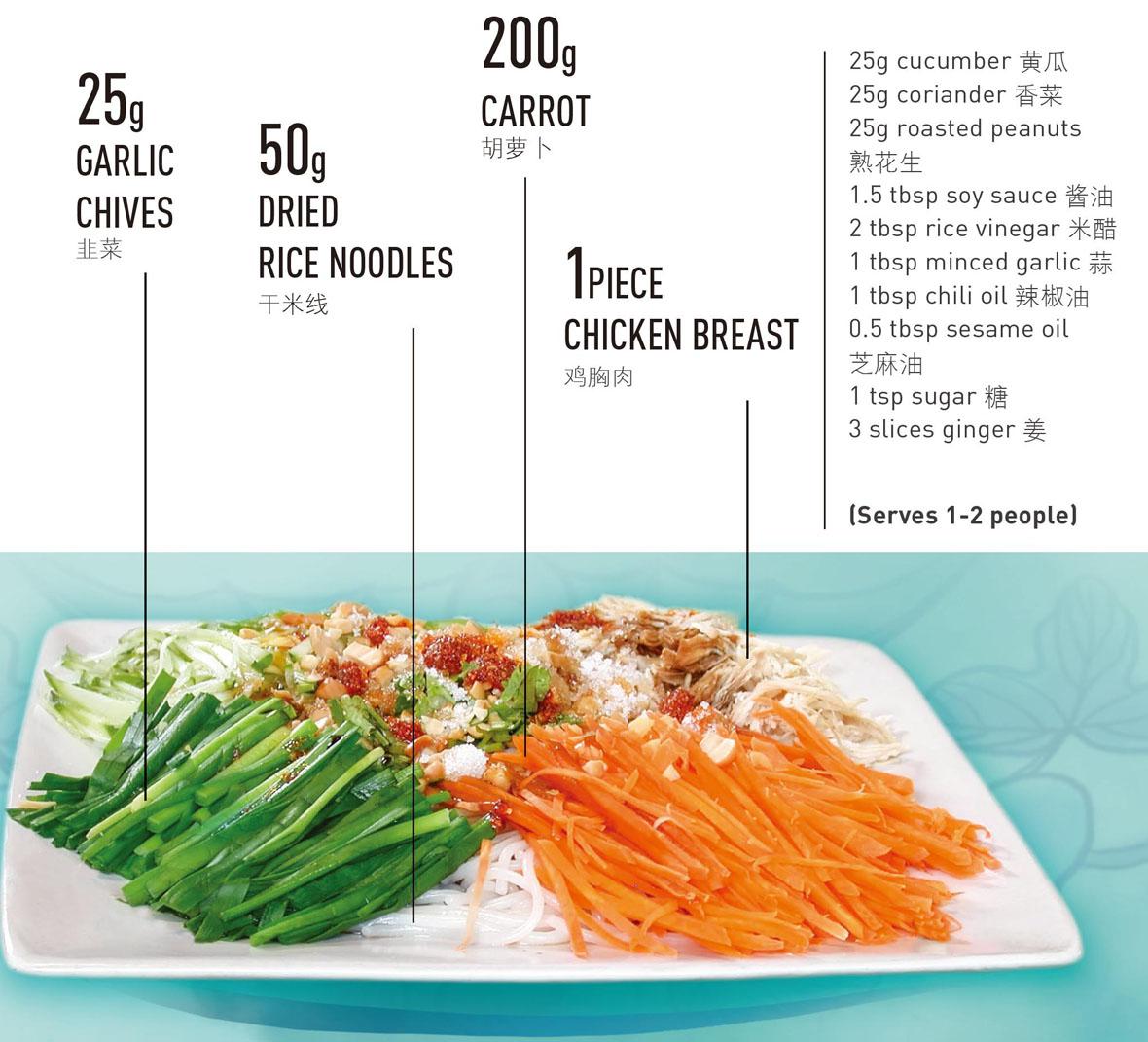Rice noodle salad 凉拌米线
孙佳慧


Liangban to keep you cool on summer days
米線,何不试试凉拌?
Noodles are steamy, delicious, succulent little strings of hearty goodness. But, lets be honest, noodles are best in a thick broth on a winters day. There is, however, a noodle dish that will keep you cool; the rice noodle salad.
For this, we turn to the world of Yunnan cuisine, where the rice noodle is king. As its name implies, rice noodles are noodles made from rice—no prizes for guessing that bit—but theyre almost always served piping hot. For the soft, cool flavor were looking for today, we want authentic Yunnan mixian (米线), meaning “rice threads”. In areas outside of Yunnan, youll want to look for mifen (米粉), or “rice vermicelli”. A quick search will reveal dozens of other rice noodle types, such as the small-pot rice noodles (小锅米线) popular in Kunming and the guoshou rice noodles (过手米线) popular among the Achang people, an ethnic group in Yunnan.
As a traditional food, rice noodles can be found on almost every street in Yunnan. In the city of Yuxi
(玉溪), you will find the Yuxi Rice Noodle Cultural Festival, which lasts for a whopping 81 days—from the first day of lunar January to the 22nd of the third lunar month. Said to be the worlds longest festival, the tradition began because the ancient Yuxi people served rice noodles as a sacrifice to the local god of the land. However, each village wanted their own worship ceremonies, so they decided to do it in turns, hence the comically long festival.
Before you prepare this dish, youre going to want to learn the word liangban (凉拌). Liang means cool and ban means mix or stir.
Liangban dishes basically have two different flavors: salty and sweet-and-sour, with the occasional spicy option. In the case of rice noodle salad, or liangban rice noodles, most people like to rely on rice vinegar to bring out that refreshing taste, an important characteristic of liangban dishes. The recipe is simple: boil the rice noodles, cool, and add the vegetables, chicken, and sauces as you like. What makes liangban so special is the versatility, a great way to hone your Chinese culinary skills. Just grab any vegetable at the market—carrot, cucumber, garlic, tomatoes, bean sprouts—and see what you can make.
As summer finally comes to an end, theres no better way to celebrate the coming cool with the perfect cold noodle dish—light on the spice and warm in the gut.
Ingredients:
25g garlic chives 韭菜
50g dried rice noodles 干米線
200g carrot 胡萝卜
1piece chicken breast 鸡胸肉
25g cucumber 黄瓜
25g coriander 香菜
25g roasted peanuts
熟花生
1.5 tbsp soy sauce 酱油
2 tbsp rice vinegar 米醋
1 tbsp minced garlic 蒜
1 tbsp chili oil 辣椒油
0.5 tbsp sesame oil
芝麻油
1 tsp sugar 糖
3 slices ginger 姜
(Serves 1-2 people)
1. Slice the carrots and cucumber into thin strips and set aside for later use.
2. Cut the garlic chives into 6cm pieces, then put them into boiled water. Add a pinch of salt and wait for 20 seconds before removing.
3. Chop the peanuts into very small chunks.
4. Boil the chicken breast with three slices of ginger until cooked through. Transfer to a plate until cool. Then, shred the chicken by hand.
5. Soak the dried rice noodles in warm water for about 20 minutes and boil until soft.
6. Drain the rice noodles, set in water to cool, and drain again. Set aside for later use.
7. Top the noodles with the chicken, garlic chives, cucumber, and carrots. Sprinkle in the soy sauce and rice vinegar. Add the minced garlic, sugar, chilli oil, and sesame oil. Then put the peanuts and coriander on the top.
8. Mix, salt to taste, and serve.

